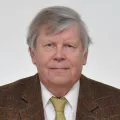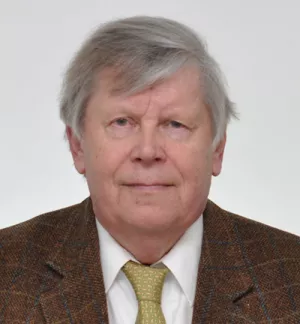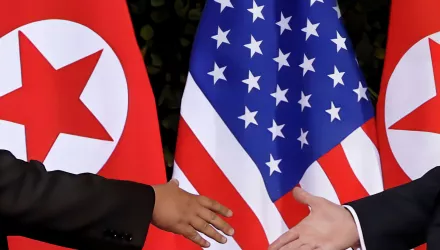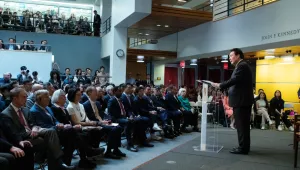Olli Heinonen, senior fellow at Harvard Kennedy School's Belfer Center, made this presentation on the inauguration of a new multimillion dollar instrument at the Transuranium Institute in Germany on June 1, 2012.
The IAEA verifications system has come a long way since its early days. Today, the Agency employs an analytical “State Level Approach‟ for safeguarding nuclear facilities around the world. This approach draws upon a holistic method of assessing a state’s nuclear program, rather than simply tabulating nuclear material calculations and stove-piping nuclear related information. The Additional Protocol that strengthens the original safeguards agreements by extending assurances to the absence of undeclared nuclear material and activities, and requirements for an early provision of design information are important components to the analysis provided. Today, many, but not all, states are implementing the Additional Protocol. The added introduction of new verification tools such as remote monitoring, the use of commercially available satellite imagery, and environmental sample analysis also supplement the process. Integral to all this is the nurturing of an investigative inspection culture necessary for effective verifications work to be carried out.
What this means is that both a well equipped, as well as properly honed directorate of inspectors, are needed to ensure effective verifications. This in turn entails keeping equipment, techniques and personnel up to date to meet the modern day environment and challenges within which inspections take place. For today’s presentation, I shall use the examples of North Korea and Syria, where investigative procedures and nuclear forensics played a key role in providing the “fingerprints‟ for their proliferation activities.
North Korea
When North Korea submitted its initial declaration under the comprehensive safeguards agreement in May 1992, it provided some history of its nuclear operations for its reprocessing plant -- a 5 MWe gas-cooled graphite moderated reactor (see Fig 1.), and a fuel fabrication plant, both located in Nyongbyon. The North Koreans reported that its 5 MWe reactor started operation in 1986 and was shut down for 100 days in 1989 to replace some damaged fuel rods. North Korea also informed the IAEA that it had reprocessed some damaged fuel rods together with fresh fuel in 1990 in a single campaign, which resulted in some 60 grams of separated plutonium.
During the summer of 1992, the IAEA verified the separated plutonium that was reprocessed, took samples from nuclear wastes, and conducted an extensive environmental sampling campaign at the Nyongbyon reprocessing plant. Since the IAEA had to verify North Korea’s declaration retroactively, its inspectors “simulated” events as per the DPRK’s declarations. The evaluation followed stepwise: irradiating fuel rods from their positions from the reactor core, batching in the dissolvers, inputting tank to the PUREX process, loading out the plutonium solutions, turning plutonium nitrate to oxalate, and finally its conversion to plutonium oxide. Based on the isotopic composition and concentrations of samples taken from each of the steps analyzed, radioisotope dating done, and examination of the operating and other supporting documentation provided by the DPRK, the IAEA found that the statements of North Korea were inconsistent on several accounts:
- the characteristics of the separated plutonium was not consistent with the irradiation history of the fuel declared to have been processed during the single reprocessing campaign in 1990;
- the characteristics of the separated plutonium and the declared irradiation history of the reprocessed fuel were mutually inconsistent with the waste that was presented as having resulted from the single campaign declared;
- the characteristics of the product batches processed through the radiochemicallaboratory plutonium product handling area were not consistent with the data declared by the DPRK; and
- the declaration that only irradiated fuel diluted with fresh fuel was reprocessed were not consistent with the results of sample analysis.
Mr. H. Blix, the then IAEA’s Director General, described the findings by saying that the Agency had actually not seen the waste originating from the plutonium product presented for verification. Consequently, the IAEA verified some nuclear waste that did not come from plutonium product presented, but from some other plutonium not seen by the IAEA. Hence there must have existed in North Korea additional plutonium, which had not been declared to the Agency. Whether it was grams or kilograms, the IAEA was not in a position to conclude. Faced with a lack of appropriate explanations, the IAEA in 1993 asked sought access in form of a special inspection to two waste sites in Yongbyon (Figs 1 and 2), which it believed could contain relevant information to the case at hand. When North Korea rejected the request on the grounds of it being non-nuclear military sites, the IAEA referred the case to the UN Security Council.
Syria
On September 6, 2007 a suspected nuclear reactor was destroyed in an attack of the Israeli Air Force at the Dair Alzour / Al Kibar site in Syria. By October 10, 2007, the Syrians had destroyed the remaining structure and emptied the area, raising international suspicion about the purpose of the attacked building and the reasons for Syria to erase its traces (Figs 3 and 4). Satellite imagery and other information pointed in the direction that the reactor was likely a gas-cooled graphite moderated reactor, which was fairly similar to the 5 MWe reactor built at Nyongbyon in North Korea.
Syria’s President Bashar al-Assad has dismissed allegations that the site hosted, or was planned to host, a nuclear reactor. Officials from Syria‟s Atomic Energy Commission also denied being involved in any undeclared nuclear reactor projects. Syria eventually conceded that the building had military purposes, but denied any nuclear purposes.
In June 2008, Syria agreed to a one-off visit by the IAEA to the Dair Alzour site. The visit included extensive environmental sampling, but inspectors were not allowed to take samples of actual debris of the buildings. Syrian officials refuse to engage substantively with the IAEA and provide additional information about the reactor. The IAEA‟s subsequent requests to visit other sites related to Al Kibar have also been turned down.
Analysis of the samples taken in June 2008 at the Dair Alzour site indicated the presence of particles of anthropogenic (“anthropogenic” refers to material that has been produced as a result of chemical processing) natural uranium of a type not included in Syria’s declared inventory of nuclear material. Syrian officials have insisted that the uranium originated from Israeli bombs.
The Agency has assessed, based on the isotopic and chemical composition and the morphology of the particles, that there is a low probability that the source of the anthropogenic natural uranium particles was the use of missiles. The evaluation also included the mechanical shape of the particles, non-existence of chemical additives typical for machined uranium pieces, and the distribution of particles at Al Kibar. In addition, the IAEA found graphite and steels in samples taken from the site.
The circumstances relating to the Dair Alzour site are distinctive in that the building on the site has been entirely taken apart by the Syrians following the bombing, debris from the site has been cleared, and several years have now passed. During the process, Syria has also not provided the necessary cooperation required by the Agency. Notwithstanding the loss of substantial information, taking into account all information made available to the Agency including the environmental samples taken from the 2008 visit, the Agency concluded in June 2011 that the destroyed building was very likely a nuclear reactor, which should have been declared by Syria pursuant to its safeguards agreement with the IAEA. The IAEA Board of Governors found Syria in non- compliance with its safeguards undertakings and referred the case to the UN Security Council.
Conclusion
North Korea and Syria are two examples where nuclear forensics played a pivotal role in conclusions the IAEA drew on their nuclear programs. I have so far not spoken about Iran because its case of environmental sampling that resulted in evidence pointing to Iran’s clandestine enrichment activities have been widely written about. But I want to conclude by reminding everyone again that in 2003, the IAEA found highly enriched uranium particles at the Kalaye Electric workshop in Tehran. This led to a long series of revelations which brought daylight not only on Iran‟s unreported uranium enrichment activities, but also to the wider findings of links to the Libyan nuclear program and the A Q Khan clandestine nuclear supply network. At the same time, there is also a less visible but equally important side of environmental samples analysis -- in providing a clean bill of health on non-proliferation. By the end of 2011, the IAEA has concluded that all nuclear material in 58 countries is in peaceful use. This conclusion has been derived with the support of environmental sample analysis.
We are here to inaugurate a large geometry SIMS at the Institute of Transuranium, a leading, world-class nuclear safeguards and forensics laboratory. Without the contribution of your laboratory and its important work, alongside other network laboratories, the IAEA would not be able to conduct its mission effectively; your services are indispensable. The new SIMS opens a new era in particle analysis by enabling us to analyze smaller, picogram size particles with high precision, including for minor isotopes. As we gather as scientists, experts and policy-makers, we all know that the work does not stop here. Techniques to better analyze chemical composition of nanometer scale uranium and plutonium particles need to be developed. This would be beneficial in establishing the origin of particles, because we know that uranium oxides easily in the atmosphere, thus hiding the actual original chemical composition in the middle these tiny particles. There is also a wider challenge facing the international community. Nuclear forensics rely on nuclear finger prints, such as impurities or minor isotope contents. We need to develop more effective administrative measures to share this data, which is presently widely distributed in various organizations.
These are just some thoughts going forward as we continue to work for a better future. I wish all of you the best in your work.
Heinonen, Olli. “Analysis of Small Particles in Support of Big Decisions.” June 1, 2012




